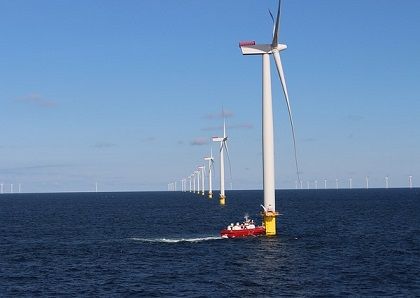A number of wind turbine companies are collaborating with the Technical University of Denmark (DTU) on a project to solve the problem of ‘leading edge erosion’ – a technical term that covers damage to turbine blades caused by raindrops.
Every time a drop of rain hits a wind turbine blade it contributes to a process that ends in small cracks being formed in the leading edge of the blade that eventually ruin the coating on the blade. The bigger the drop, the worse the damage, reports DR Nyheder.
A lot of punishment
“We’re talking about serious stresses because the turbines turn at around 300 km per hour during rainy weather and it is incredibly difficult to find material that can handle this kind of punishment,” said Jakob Ilsted Bech, a senior researcher at DTU.
Blades at the Anholt Havvindmøllepark offshore wind turbine park have had to be repaired after only five years and, apart from the lost electrical production, this can be a very costly business.
READ ALSO: Denmark looking into building North Sea wind energy island
“It is especially in the earliest offshore projects that have been installed that unforeseen erosion has been noticed, and it has come relatively fast,” said product manager Peder Riis Nickelsen from Siemens Gamesa.
Co-operating for the common good
In an almost unprecedented step, Vestas, Siemens Gamesa and LM Wind Power are all working together with DTU to try to find a solution.
“It is advantageous that competitors can work together to find a common solution. Although our customers have the possibility to buy turbines from different suppliers, they are designed around the same parameters,” said Nickelsen.
Jakob Ilsted Bech from DTU added that “at the moment, we lack a fundamental understanding of these mechanism that we can use when we design new leading edges and develop new materials, and that is what we are looking into.”














